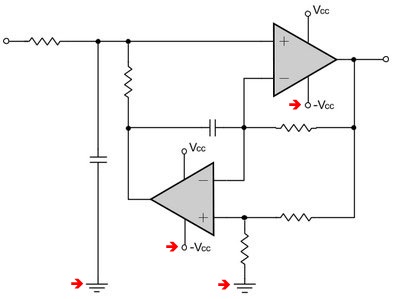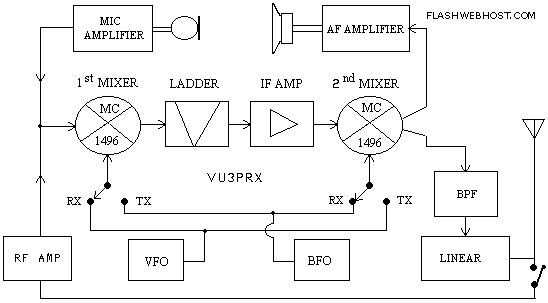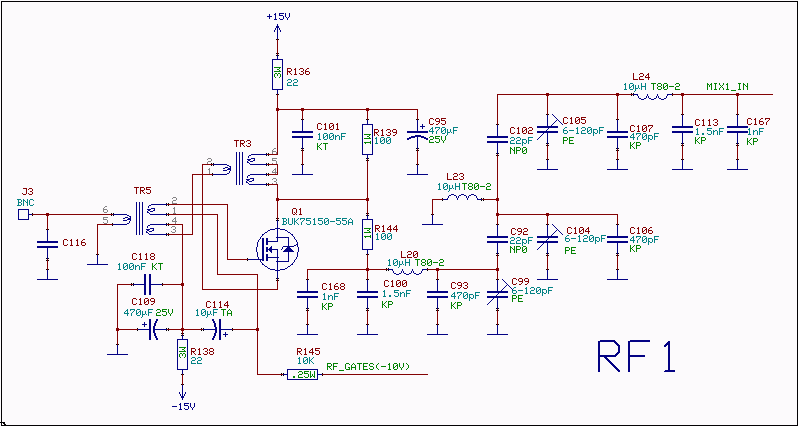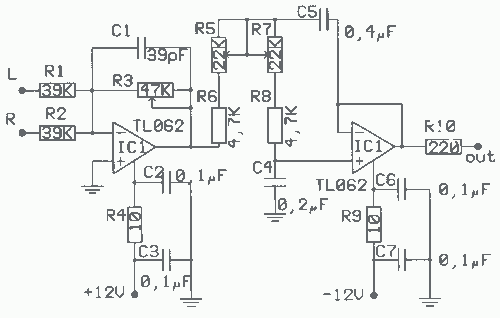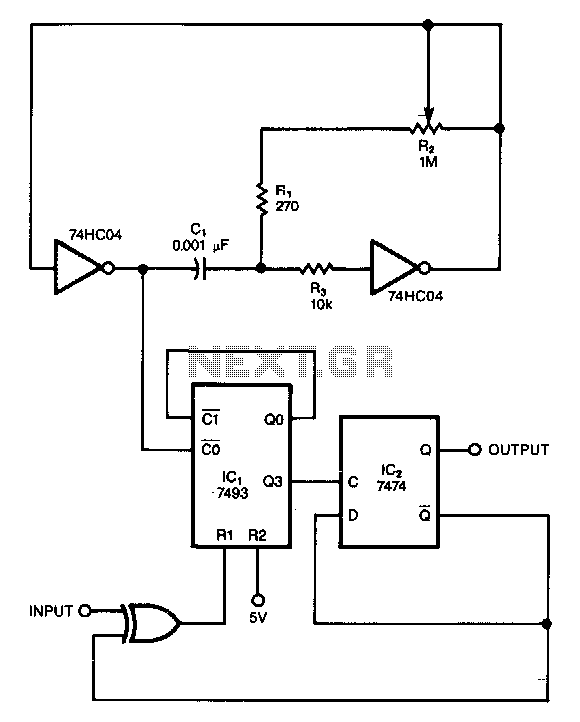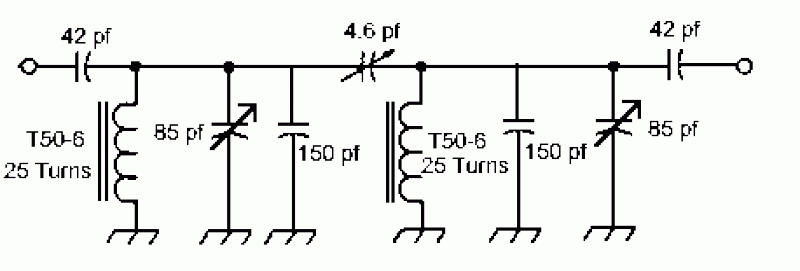
Razor-sharp CW filter
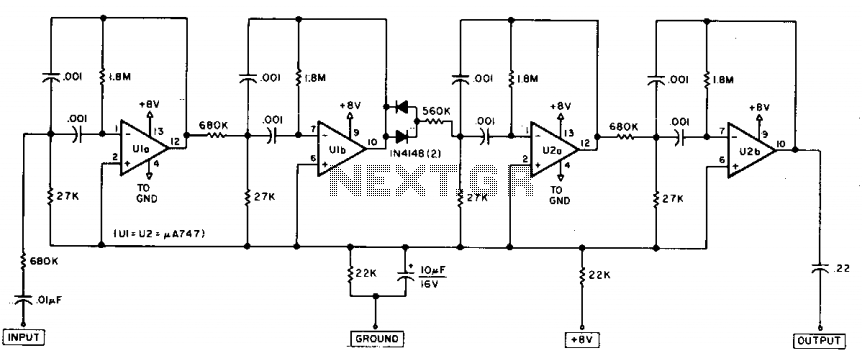
The circuit consists of four stages of active bandpass filtering provided by two type-µ integrated-circuit dual op-amps and includes a simple threshold detector (diodes D1 and D2) between stages 2 and 3 to reduce low-level background noise. Each of the four filter stages acts as a narrow bandpass filter with an audio bandpass centered at 750 Hz. The actual measured 3-dB bandwidth is only 80 Hz wide.
The described circuit employs a multi-stage active bandpass filter configuration, utilizing two dual operational amplifiers (op-amps) of the type-µ integrated circuit. The design features four sequential filter stages, each configured to provide narrow bandpass characteristics, specifically tuned to center around 750 Hz. This frequency is typically within the audio range, making it suitable for applications such as audio signal processing or noise suppression in communication systems.
The function of each filter stage is to selectively allow signals within a specific frequency band to pass through while attenuating frequencies outside this range. The narrow bandwidth of 80 Hz indicates that the circuit is designed to target very specific audio signals, enhancing the desired signal while minimizing interference from adjacent frequencies.
In addition to the filtering stages, the circuit incorporates a threshold detection mechanism between the second and third stages. This is achieved through the use of diodes D1 and D2, which serve to detect and clamp low-level background noise. By implementing this threshold detector, the circuit effectively reduces the impact of noise on the audio signal, ensuring that only signals above a certain amplitude are allowed to proceed through the subsequent filter stages.
Overall, the design emphasizes precision in filtering and noise reduction, making it an effective solution for scenarios where clear audio signal transmission is critical. The use of dual op-amps allows for compact integration of multiple filtering stages, thereby simplifying circuit design and potentially reducing component count.The circuit consists of four stages of active bandpass filtering provided by two type-µ integrated-circuit dual op amps and includes a simple threshold detector (diodes Dl and D2) between stages 2 and 3 to reduce low-level background noise. Each of the four filter stages acts as a narrow bandpass filter with an audio bandpass centered at 750 Hz.
The actual measured 3-dB bandwidth is only 80 Hz wide. 🔗 External reference
The described circuit employs a multi-stage active bandpass filter configuration, utilizing two dual operational amplifiers (op-amps) of the type-µ integrated circuit. The design features four sequential filter stages, each configured to provide narrow bandpass characteristics, specifically tuned to center around 750 Hz. This frequency is typically within the audio range, making it suitable for applications such as audio signal processing or noise suppression in communication systems.
The function of each filter stage is to selectively allow signals within a specific frequency band to pass through while attenuating frequencies outside this range. The narrow bandwidth of 80 Hz indicates that the circuit is designed to target very specific audio signals, enhancing the desired signal while minimizing interference from adjacent frequencies.
In addition to the filtering stages, the circuit incorporates a threshold detection mechanism between the second and third stages. This is achieved through the use of diodes D1 and D2, which serve to detect and clamp low-level background noise. By implementing this threshold detector, the circuit effectively reduces the impact of noise on the audio signal, ensuring that only signals above a certain amplitude are allowed to proceed through the subsequent filter stages.
Overall, the design emphasizes precision in filtering and noise reduction, making it an effective solution for scenarios where clear audio signal transmission is critical. The use of dual op-amps allows for compact integration of multiple filtering stages, thereby simplifying circuit design and potentially reducing component count.The circuit consists of four stages of active bandpass filtering provided by two type-µ integrated-circuit dual op amps and includes a simple threshold detector (diodes Dl and D2) between stages 2 and 3 to reduce low-level background noise. Each of the four filter stages acts as a narrow bandpass filter with an audio bandpass centered at 750 Hz.
The actual measured 3-dB bandwidth is only 80 Hz wide. 🔗 External reference
